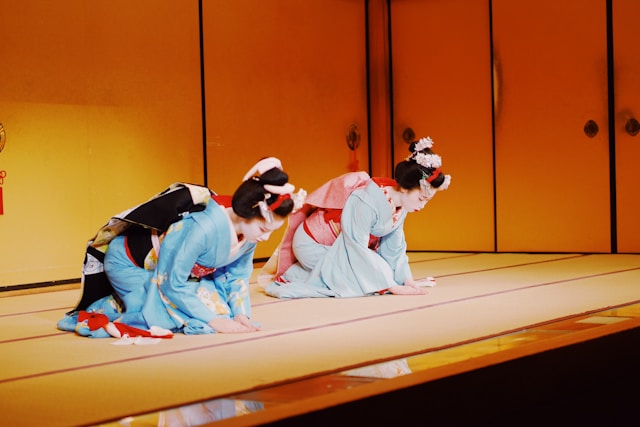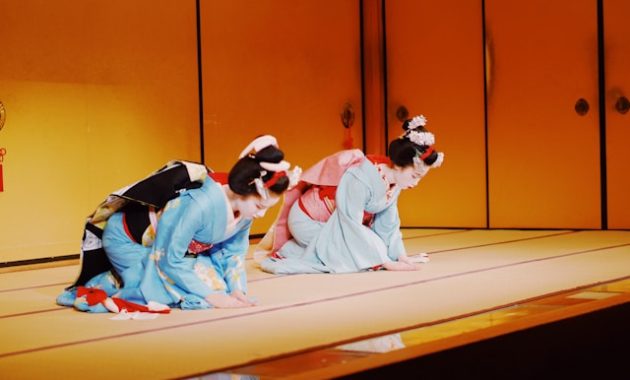
Kyoto, Japan, is a city steeped in rich history, cultural practices, and timeless traditions. Two of the most significant and iconic cultural experiences that continue to captivate visitors are the traditional tea ceremonies and the Geisha culture. These elements of Kyoto’s heritage reflect the intricacies of Japanese customs and provide a unique window into Japan’s past and present. For those seeking a deeper understanding of Japan, cultural immersion through these experiences offers an unparalleled journey into the heart of Japanese society.
The Essence of Traditional Tea Ceremonies in Kyoto
Kyoto is the birthplace of Japanese tea ceremonies, a practice that traces its origins back to the 12th century. Introduced from China, tea became a deeply spiritual and artistic practice in Japan, primarily under the influence of the Zen Buddhist monks. Known as “Chanoyu” or the “Way of Tea,” the tea ceremony is much more than just the preparation and consumption of tea. It is a meticulously choreographed ritual that focuses on harmony, respect, purity, and tranquility.
The Four Principles of Tea Ceremonies: Wa, Kei, Sei, and Jaku
In a traditional Kyoto tea ceremony, the focus is placed on the principles of Wa (harmony), Kei (respect), Sei (purity),and Jaku (tranquility). These four principles guide every movement and interaction during the tea-making process. The host, who prepares and serves the tea, must adhere to these concepts, ensuring that each gesture is deliberate and meaningful.
- Harmony (Wa): Everything in the tea room, from the utensils to the garden outside, is meant to create a sense of peaceful unity. The arrangement of flowers, the placement of objects, and even the choice of tea bowl reflect this harmony.
- Respect (Kei): Mutual respect is a cornerstone of the tea ceremony. Both the host and the guests show deference to one another, to the utensils used, and to the environment surrounding them.
- Purity (Sei): The preparation of the tea is performed with great attention to cleanliness and simplicity. The act of purifying the tools is symbolic of the internal purification of the mind.
- Tranquility (Jaku): The culmination of the ceremony results in a shared moment of calm. The simplicity and ritualistic nature of the ceremony evoke a sense of serenity, free from the distractions of daily life.
The Role of the Tea Master
The Tea Master, a key figure in Kyoto’s tea ceremonies, must undergo years of rigorous training to master the complex art of tea preparation. They are skilled not only in the physical actions but also in the spiritual and aesthetic aspects of the ceremony. In Kyoto, tea masters often serve in tea houses, traditional settings where visitors can experience the ceremony firsthand.
One of the most famous schools of tea, the Urasenke School, has its roots in Kyoto. This school, founded by Sen no Rikyu, the most revered tea master in Japanese history, has played a pivotal role in shaping modern tea ceremonies. His philosophies, including the notion that the tea ceremony is a reflection of the beauty in everyday life, continue to influence tea practices across Japan.
The Tea Room: A Sacred Space
A Kyoto tea ceremony takes place in a specially designed room known as the chashitsu. The tea room is minimalist in nature, often constructed from natural materials like wood and paper, with sliding doors that open to a serene garden. Every element, from the hanging scrolls to the flower arrangements, is chosen to reflect the season and the mood of the ceremony.
The entrance to the tea room, traditionally small and low, forces guests to bow as they enter, symbolizing humility and equality. Inside, the atmosphere is one of quiet contemplation, where every sound—the boiling water, the whisking of tea, and the soft conversation—adds to the experience.
Geisha Culture in Kyoto: A Living Tradition

When one thinks of Kyoto, the image of the Geisha, or Geiko as they are called in Kyoto dialect, is often one of the first to come to mind. The Geisha culture in Kyoto is both mysterious and alluring, representing one of Japan’s oldest performing arts traditions.
What Is a Geisha?
A Geisha is a traditional female entertainer who is highly skilled in classical music, dance, and games. These women are not merely performers; they are custodians of Japanese traditions. The art of being a Geisha involves years of training, starting from a young age, where girls enter apprenticeship programs and gradually refine their skills.
In Kyoto, the district of Gion is the most renowned for its Geisha culture. Here, visitors can catch glimpses of Geiko and Maiko (apprentice Geisha) dressed in their colorful kimonos, walking along the cobbled streets or performing at exclusive tea houses known as Ochaya.
Training and Life of a Geisha
Becoming a Geisha requires dedication and discipline. The training begins as a Maiko, where young girls learn the traditional arts, including dance, shamisen (a three-stringed instrument), and tea ceremony etiquette. During this time, they live in special boarding houses called Okiya under the guidance of senior Geishas and a Mother figure, who manages their careers.
The transition from Maiko to Geiko is a significant milestone, marked by a ceremony known as Erikae (the turning of the collar), signifying their full-fledged status as professional entertainers. Geishas maintain a strict code of conduct, adhering to a lifestyle that revolves around the preservation of cultural arts and traditions.
The Geisha’s Performance and the Ochaya Experience
For those fortunate enough to be invited into an Ochaya in Gion, the experience is unlike any other. Geishas perform traditional dances, accompanied by live music, and engage in witty conversations with guests. The performances are intimate, refined, and designed to transport the audience into a world of elegance and grace.
Geishas are known for their ability to entertain with subtlety and charm, engaging their guests in parlor games and dialogues that reflect their deep understanding of Japanese literature, poetry, and culture. The experience is not just about the performance but also about creating an atmosphere of exclusivity and cultural enrichment.
The Intersection of Tea Ceremonies and Geisha Culture
Kyoto’s tea ceremonies and Geisha culture intersect in many ways, particularly in the Ochaya tea houses, where Geishas often serve tea as part of their performances. Both traditions emphasize refinement, elegance, and artistry, making them essential elements of Kyoto’s cultural landscape. The fusion of these two traditions offers visitors a profound connection to Japan’s historical roots.
Visitors to Kyoto have the unique opportunity to witness these two cultural treasures firsthand, gaining insights into the values of hospitality, artistry, and tranquility that have shaped Japan’s cultural identity for centuries.